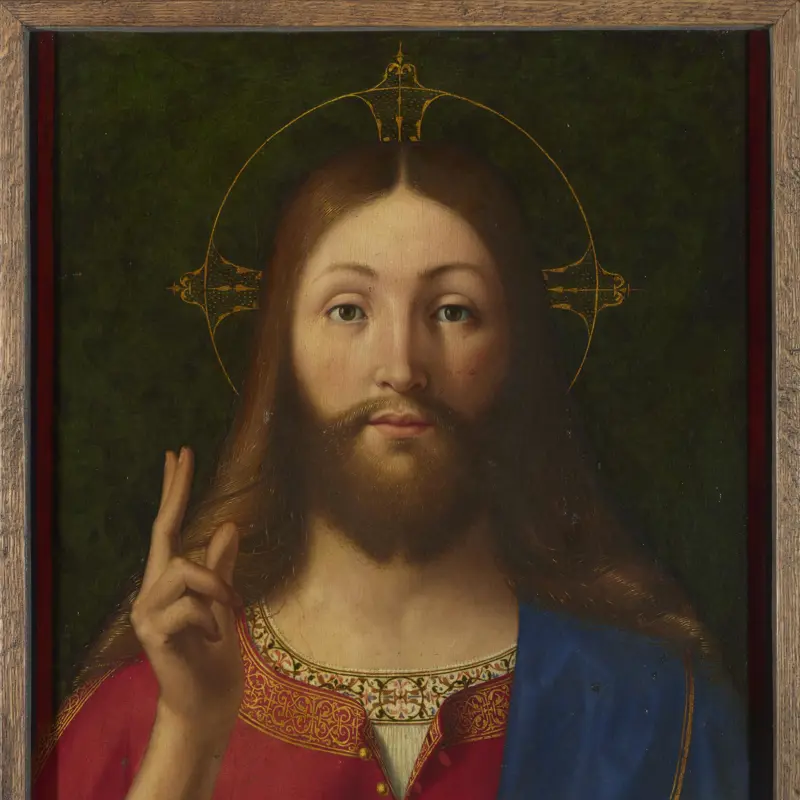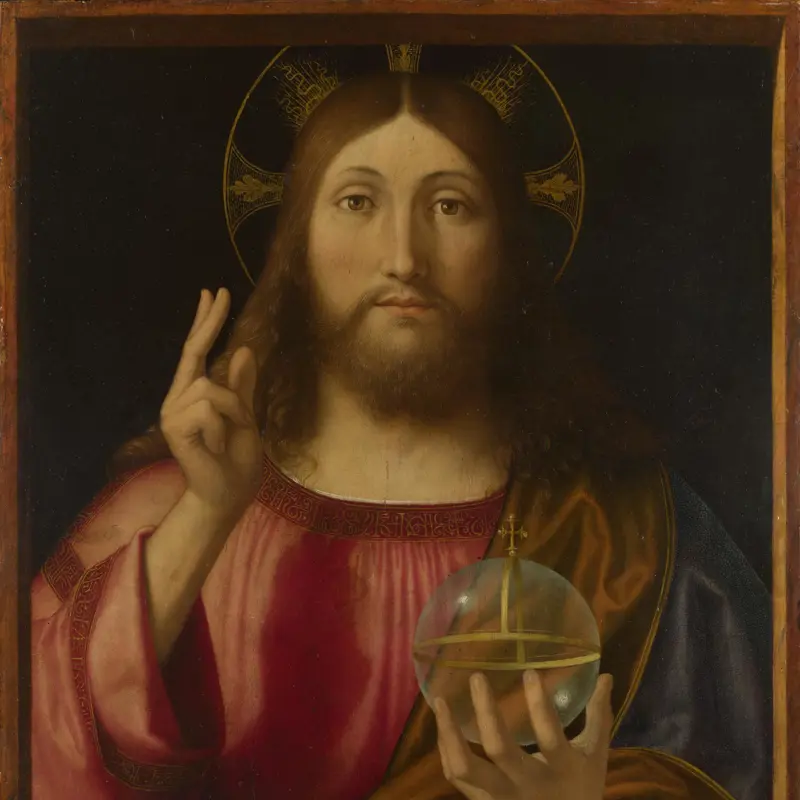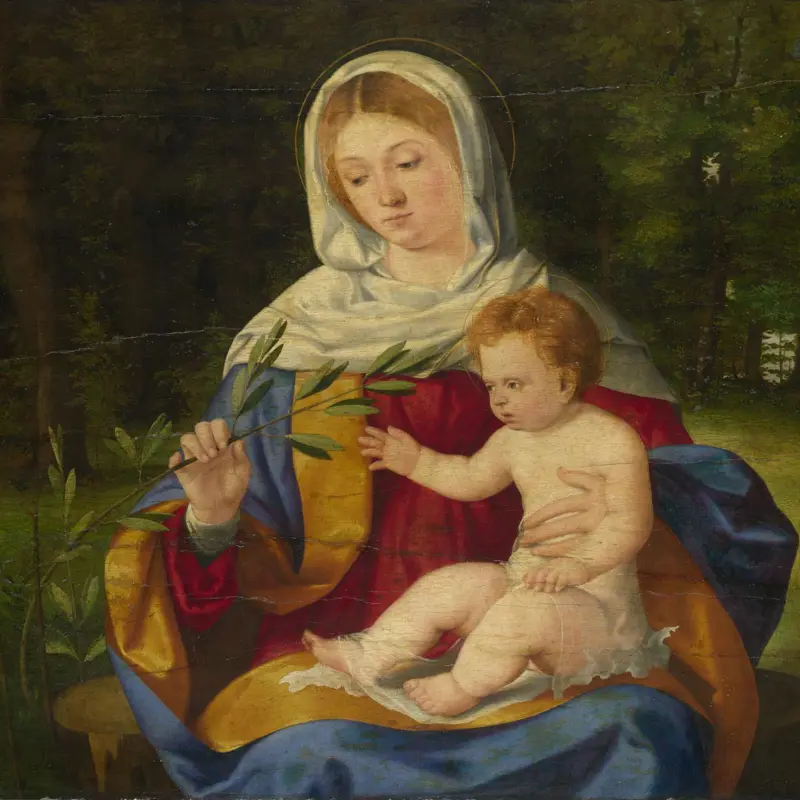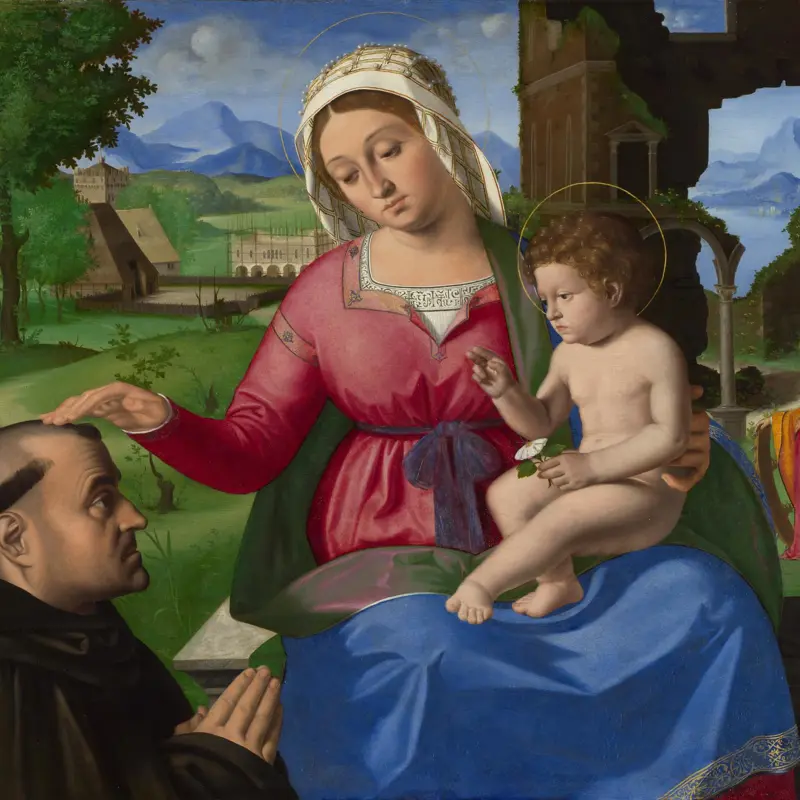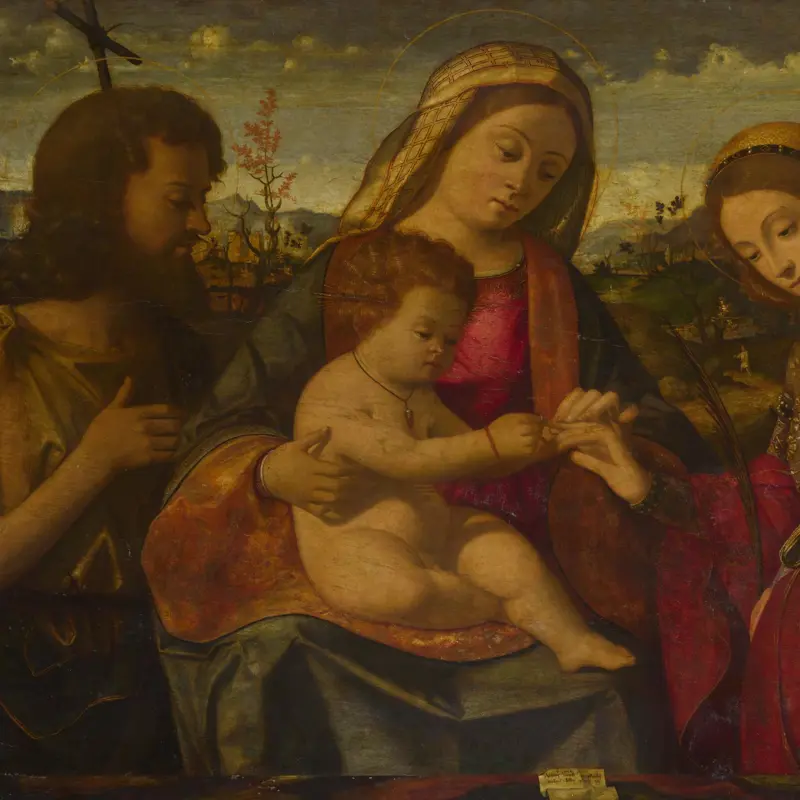Andrea Previtali, 'The Virgin and Child adored by Two Angels', about 1505
About the work
Overview
The Virgin is seated on the ground in the valley of a north Italian mountainous landscape. The naked infant Christ sits upright on her lap, holding two cherries, which symbolise the fruit of paradise. Two angels kneel before him, their arms crossed in adoration and hands clasped in prayer.
Images of the Virgin seated on the ground in a landscape are known as ‘the Madonna of Humility’. This type of composition was favoured by Previtali’s teacher, the Venetian artist Giovanni Bellini. It was intended to express the Virgin’s humility and her presence in everyday life.
X-ray images reveal that the Virgin originally looked out at the viewer, but Previtali repainted her face. Now none of the figures look at each other or us, and their distant gazes give the painting a still, contemplative atmosphere. The composition was based on a painting by Boccaccio Boccaccino of about 1500. It was not unusual at the time for patrons to specify that an artist should follow an established model.
Key facts
Details
- Full title
- The Virgin and Child adored by Two Angels
- Artist
- Andrea Previtali
- Artist dates
- About 1480 - 1528
- Date made
- About 1505
- Medium and support
- Oil, originally on wood, transferred to canvas
- Dimensions
- 67.9 × 93.8 cm
- Acquisition credit
- Layard Bequest, 1916
- Inventory number
- NG3111
- Location
- Not on display
- Collection
- Main Collection
- Previous owners
Provenance
Additional information
Text extracted from the ‘Provenance’ section of the catalogue entry in Nicholas Penny, ‘National Gallery Catalogues: The Sixteenth Century Italian Paintings’, vol. 1, ‘Paintings from Bergamo, Brescia and Cremona’, London 2004; for further information, see the full catalogue entry.
Bibliography
-
1951Davies, Martin, National Gallery Catalogues: The Earlier Italian Schools, London 1951
-
1986Davies, Martin, National Gallery Catalogues: The Earlier Italian Schools, revised edn, London 1986
-
2001
C. Baker and T. Henry, The National Gallery: Complete Illustrated Catalogue, London 2001
-
2004
Penny, Nicholas, National Gallery Catalogues: The Sixteenth Century Italian Paintings, 1, Paintings from Bergamo, Brescia and Cremona, London 2004
About this record
If you know more about this work or have spotted an error, please contact us. Please note that exhibition histories are listed from 2009 onwards. Bibliographies may not be complete; more comprehensive information is available in the National Gallery Library.

